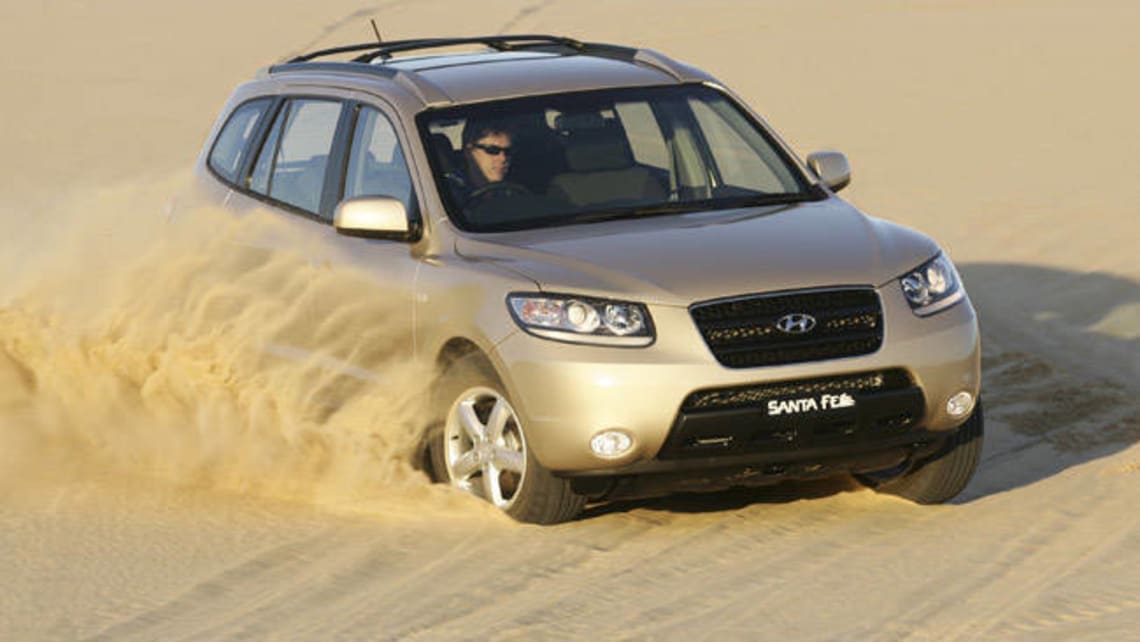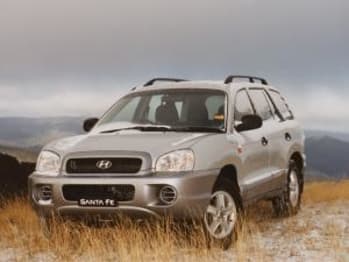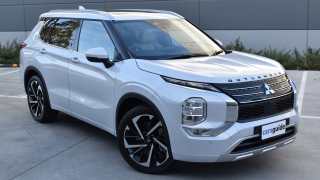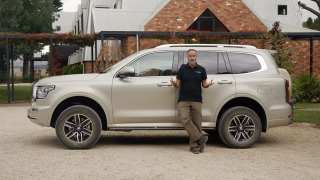
Used Hyundai Santa Fe review: 2000-2009
- Hyundai Santa Fe
- Hyundai Santa Fe 2004
- Hyundai Santa Fe 2005
- Hyundai Santa Fe 2006
- Hyundai Santa Fe 2007
- Hyundai Santa Fe 2008
- Hyundai Santa Fe 2009
- Hyundai Santa Fe 2000
- Hyundai Santa Fe 2001
- Hyundai Santa Fe 2002
- Hyundai Santa Fe 2003
- Hyundai Santa Fe Reviews
- Hyundai Reviews
- Hyundai SUV Range
- SUV
- Hyundai
- Used Car Reviews
- Buying tips
- 7 seater

Larger than average for its class, the Hyundai Santa Fe is a popular SUV that can be used as a family car provided the offshoots haven’t reached their hulking-teen stage.
There's good legroom in the rear, but some of that legroom has been gained by stealing space from the front seat occupants. A third-row seat option arrived in the all-new model in 2006. As good luggage space, including side bins and hidden storage space under the floor panel. A retractable blind and luggage net combine to improve safety and security. The rear glass can be opened separately if you don’t want to lift the whole tailgate, a real convenience in cramped carparks.
Off-road Santa Fe's better than average for its class and can cope with harsher conditions than those likely to be demanded by the typical owner. It really is a 4WD, not simply an SUV. But don’t mistake if for a full house off-roader or you may get yourself into stuck in awkward areas. The Santa Fe first reached Australia in 2000 and sales were moderately good from the start, though it its somewhat over-the-top styling didn’t appeal to everyone.
An all-new, larger, model was launched in May 2006 with a more mainstream look that saw it pick up a lot of buyer interest. The 2006 model was offered with a third row of seats for the first time. As in any vehicle of this size, the extra row of seats steals a lot of the boot area. Ride comfort is generally good and handling is nicely sorted for Australian conditions.
The Koreans really seem to have a feel for what Australian drivers like in their vehicles. In the bush the Santa Fe copes well with corrugations, in the suburbs speed-bumps seldom cause any real grief. Santa Fe originally arrived only with the power of Hyundai's 2.7-litre V6 engine, but the range was expanded in 2001 when a four-cylinder 2.4-litre unit arrived. The four-cylinder engine wasn’t all that popular and was taken off the Australian market towards the end of 2003. That’s no reflection on the four-cylinder engine itself and it should make a good used-car buy.
Four-cylinder engines in a car of this size can be a bit of a compromise in performance and Hyundai was smart in only importing it with a five-speed manual version as an automatic could have taken away enough grunt to make it unacceptable for some drivers. All V6-powered Santa Fe models have a four-speed automatic transmission. The V6 auto has a sequential function to give the driver a fair degree of manual control and is useful for getting the best from the engine.
From late 2006, Hyundai offered its Santa Fe with a turbo-diesel engine for the first time in Australia. The potential fuel savings make it worth hunting down. The Hyundai dealer network is large and generally widespread in Australia. Because most Santa Fe 4WDs are used in the metropolitan areas dealers aren't that common in the bush, so check in our local area to make sure spares and service are on offer close handy. Spare parts prices are about average for this class.
Santa Fe is fairly traditional in its mechanical makeup and the good home mechanic will find themselves able to do much of the work. It always pays to have a good workshop manual at hand, and don’t attempt any safety related repairs unless you really know what you are doing.
Insurance charges are moderate, though there does seem to be a bigger than average spread of premiums between companies. So it’s worth taking the time to shop around for the best deal for your circumstances.
Hyundai Santa Fe works extremely well considering it’s the company’s first attempt at a vehicle in this class. It has since been joined by the slightly softer Tucson SUV and the tough Terracan off-roader, thus making Hyundai very much an integral part of the booming Australian 4WD/SUV scene.
WHAT TO LOOK FOR
Look over the interior for signs of it having had a hard time at the hands of uncaring children. Build quality is generally good, but there can be the occasional rough one.
Check for signs of underbody damage caused by harsh off-road use. The body corners and doors sills are often the first to suffer. Also look at the protection plates under the engine for damage.
While you are under the vehicle look for white stains that may be the residue of salt water picked up during a trip to the beach. Salt water can create corrosion much faster than fresh.
Look for fine scratches in the paint where the body has been squeezed past branches. Deeper scratches are likely to have been caused by trees or rocks.
Check that the engine starts easily, that it pulls well and doesn’t hesitate when accelerated suddenly.
Make sure the transmission operates smoothly and easily and that there are no funny noises from the driveshafts and universal joints.
CAR BUYING TIP
Beware the SUV that has been taken to off-road areas by people that don’t know a lot about driving on unsealed surfaces. It may have suffered body, underbody and even suspension damage.
Pricing
| Year | Price From | Price To |
|---|---|---|
| 2009 | $5,830 | $13,200 |
| 2008 | $5,060 | $12,320 |
| 2007 | $3,960 | $11,330 |
| 2006 | $3,190 | $10,450 |
| 2005 | $3,850 | $5,610 |
| 2004 | $2,090 | $6,160 |
| 2003 | $2,090 | $5,060 |
| 2002 | $2,200 | $5,060 |
| 2001 | $2,200 | $5,060 |
| 2000 | $2,200 | $5,060 |
Pricing guides
Range and Specs
| Vehicle | Specs | Price* | |
|---|---|---|---|
| GL (4X4) | 2.7L, ULP, 4 SP AUTO | $2,200 – 3,410 | 2000 Hyundai Santa Fe 2000 GL (4X4) Pricing and Specs |
| GLS (4X4) | 2.7L, ULP, 4 SP AUTO | $3,190 – 5,060 | 2000 Hyundai Santa Fe 2000 GLS (4X4) Pricing and Specs |
$2,090
Lowest price, based on third party pricing data







